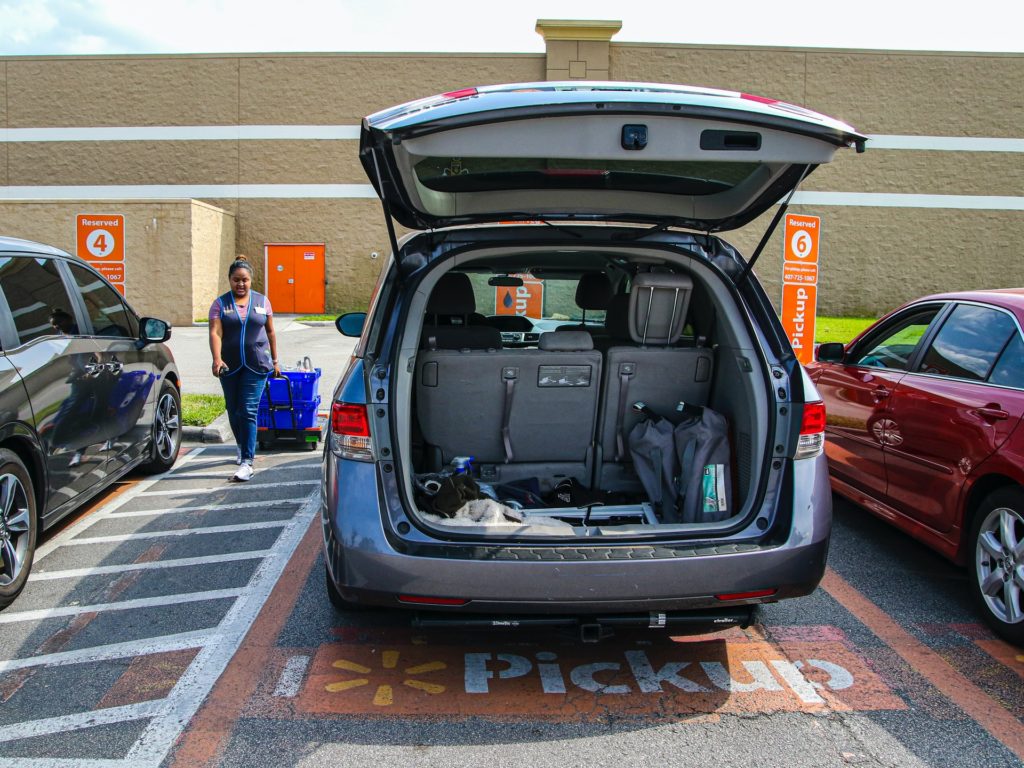When is a drive-thru not a drive-thru? When it’s a kerbside collection.
It’s not as catchy as: ‘When is a door not a door?’ (answer, when it’s a jar) but it speaks to the idea that in-car collection, and the technologies that support it, are flexible enough to bend to the needs of a business and its guests. This is particularly relevant as Scotland heads into a tighter lockdown. With click and collect services restricted, and speculation that England may follow suit, curbside is a strong and viable alternative to click & collect.
As we discussed in our recent blog, the drive-thru is gaining popularity as customers seek out, not only convenient, but COVID-safe way of collecting takeout. However, not every brand is McDonald’s, not every company has enough money to invest, or space to construct an effective drive-thru circuit. When planning a drive-thru there are many considerations, from the driving surface to how to lay out the queue to maximise car numbers. Is there a designated spot for vehicles to pull over when orders are complicated or so time-consuming that they hold up the queue?
A benefit of pre-ordering using mobile technology to facilitate any type of in-car collection, is that you have a longer lead time for food preparation than with traditional drive-thrus. Compare this to the drive thrus that use on-site order boards/kiosks and it’s clear why pre-ordering is more efficient; drive-thrus regularly face bottlenecks as indecisive customers take their time working through options.
For brands that don’t have the space or capital to invest in a drive-thru, there is an alternative: kerbside collection. In this scenario, the guest orders ahead of time, adding a description of their car when submitting their choices. At the time they’ve selected, they pull into an allotted ‘collection car space’ and a staff member delivers the order into the car boot. Alternatively, if the guest hasn’t ordered in advance, the staff member can use the same ordering platform to take their order through the window of the car, taking payment and transferring it to the kitchen for preparation in moments (though when this happens, we would call it ‘drive-up’).
But what about running both options in conjunction with each other? That’s exactly what the biggest food brands are doing to maximise their revenue potential. In the USA, Wendy’s has laid out its intention to put additional focus on kerbside. The brand giant has explained that after pulling in 90% of its business from the drive-thru during COVID-19, it will work on initiatives like kerbside because “we know a frictionless experience is what customers will demand as we move forward in a post-Covid world.”
Kerbside collection is attractive for guests that arrive on-site for the drive-thru and are put-off by queuing. Lisa van Kesteren, CEO at SeeLevel HX has said: “The perception of kerbside is that they are first in line because they don’t see anyone ahead of them, and that their food will be hotter and fresher.”
Further, kerbside is an excellent way for sites to accommodate more traffic when the drive-thru is at capacity. By running both, traffic at either point can be diluted as needed. Not only does kerbside alleviate some of the pressure on staff and traffic congestion, it allows a greater number of customers to be served at any one time, good news for customers and the bottom line.
Will you be implementing drive-thru or kerbside in addition to or as alternative to click & collect this year? If you are looking for an online ordering solution to support pre-ordering and capacity management, head to our contact page and leave a message. We’ll be in contact!





